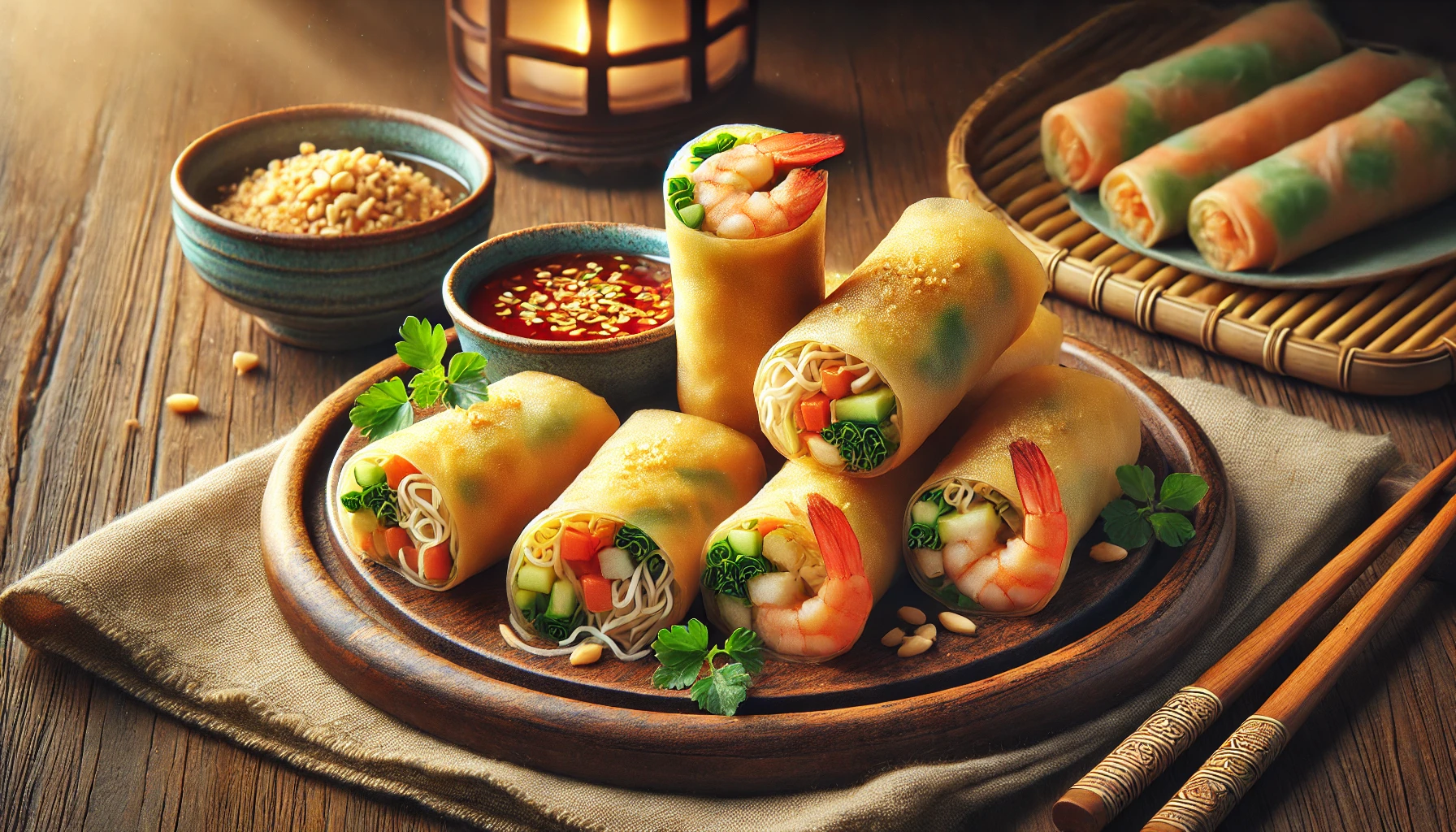Our Location
304 North Cardinal St.
Dorchester Center, MA 02124

If you’re on the hunt for a fresh, healthy, and incredibly tasty dish, Vietnamese Spring Rolls should be at the top of your list. These rolls, known locally as Gỏi cuốn, are a vibrant combination of fresh vegetables, succulent shrimp (or other proteins), and aromatic herbs wrapped in delicate rice paper. Served with a delicious peanut dipping sauce, they offer a perfect balance of flavors and textures. Whether you’re looking for a quick snack, a light appetizer, or a fun dish to serve at a gathering, this recipe is your gateway to one of Vietnam’s most loved treats.
Vietnamese Spring Rolls are loved for their fresh, vibrant flavors and their healthy ingredients. These rolls use rice paper, which is low in calories and naturally gluten-free, while the fillings typically include fresh vegetables, lean proteins, and aromatic herbs. They’re incredibly versatile—whether you prefer shrimp, chicken, or tofu, you can customize them to your taste. The best part? They’re not deep-fried, which makes them a healthier alternative to the typical fried spring rolls you might be familiar with. If you’re craving a light, nutritious, and tasty dish, these rolls are the perfect choice.
Start by cooking your shrimp if they’re not already cooked. You can boil them or grill them with a little salt and pepper for extra flavor. Next, julienne your cucumber and carrots, slice your avocado, and chop the lettuce and fresh herbs. Cook the rice vermicelli noodles according to package instructions, then drain them and set aside.
Use a wide, shallow dish and fill it with warm water. Take one sheet of rice paper and dip it into the water for about 10-15 seconds, just until it becomes soft and pliable. Avoid soaking for too long, as the rice paper will become too fragile to work with. Once softened, carefully remove the rice paper from the water and place it flat on a clean surface, such as a cutting board or a damp kitchen towel.
Lay your prepared fillings in the center of the rice paper. Start with a layer of lettuce, followed by a small handful of noodles. Then, add your shrimp (or other protein), cucumber, carrots, herbs, and avocado. Be sure not to overstuff—leave enough space on the edges to fold and roll the paper tightly.
Begin folding the sides of the rice paper inward toward the center. Then, starting from the bottom, carefully roll the rice paper upwards while gently tucking the fillings inside as you go. You want the roll to be tight but not too tight that the rice paper tears. Once you reach the top, fold over the last edge to seal the roll. Repeat with the remaining rice paper sheets and fillings.
Arrange the rolls on a serving platter, and cut them in half diagonally if you prefer. For the peanut dipping sauce, whisk together the peanut butter, soy sauce, rice vinegar, minced garlic, honey, and chili flakes (if desired). Add water a little at a time until you achieve the desired consistency, smooth enough for dipping. Serve the rolls with the dipping sauce on the side.
If there are any leftovers, keep them in a sealed container in the refrigerator. To keep the rolls fresh, place a damp paper towel inside the container with the rolls, and wrap the rolls lightly to keep the rice paper from drying out. They should be eaten within a day or two for the best taste and texture. If you need to reheat them, you can quickly dip them in warm water to soften them again or serve them cold.
Vietnamese Spring Rolls are not just delicious; they’re also packed with health benefits:
If you’re looking for a fun, healthy, and customizable dish, Vietnamese Spring Rolls are the perfect option. Whether you’re a seasoned cook or a beginner, this simple recipe will help you create an impressive and tasty dish that’s perfect for any occasion. Fresh ingredients, light flavors, and a delicious peanut dipping sauce make these rolls a must-try. So, roll up your sleeves and give this recipe a go—you won’t regret it!
Ready to explore more delicious Vietnamese recipes? Check out our other posts for more tasty dishes that are as easy to make as they are delightful to eat. Happy cooking!
There are no reviews yet. Be the first one to write one.